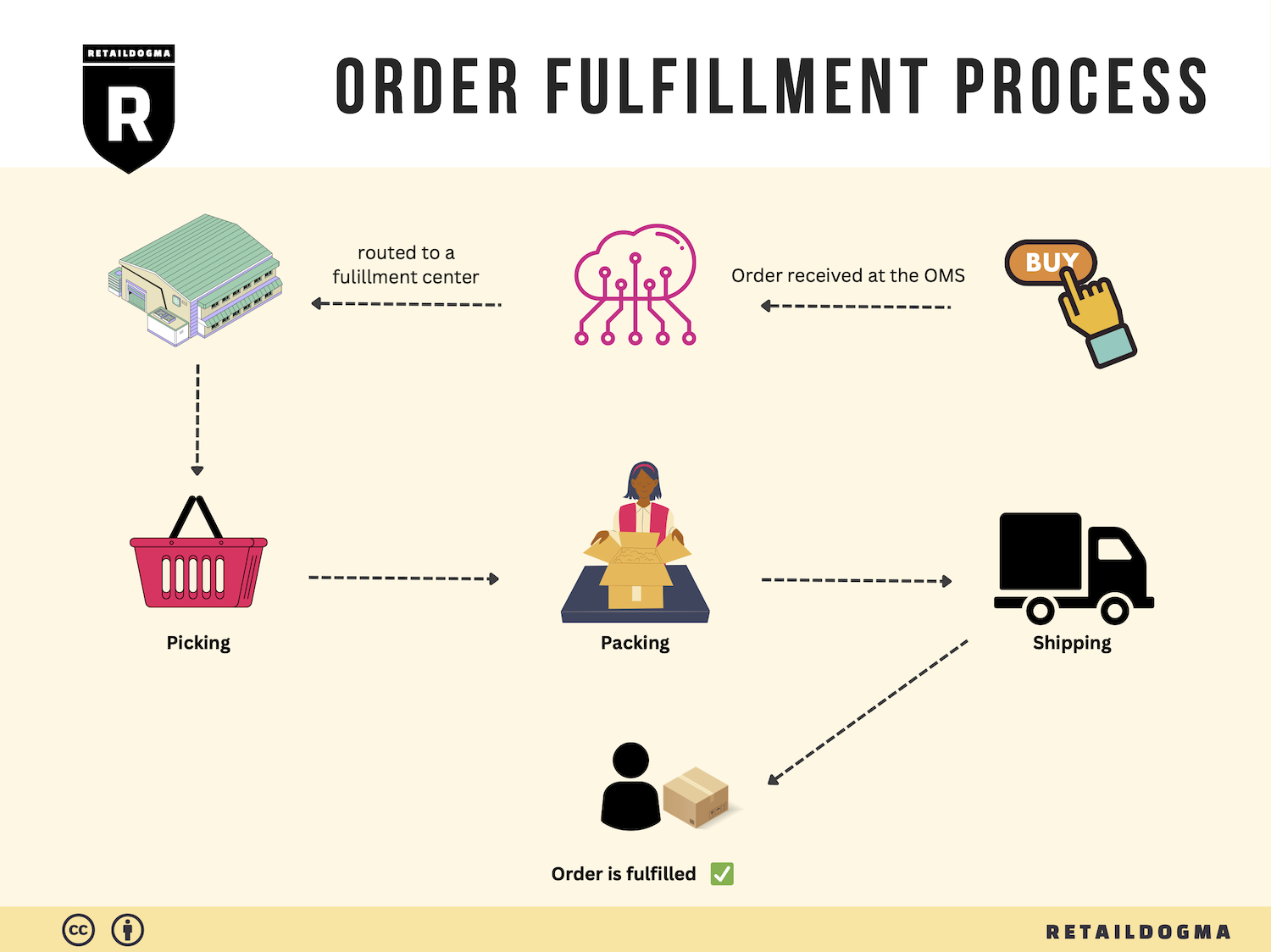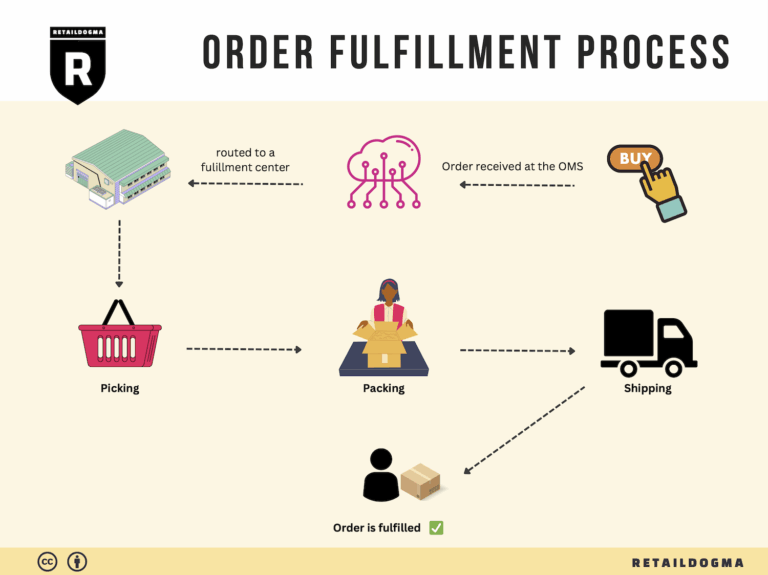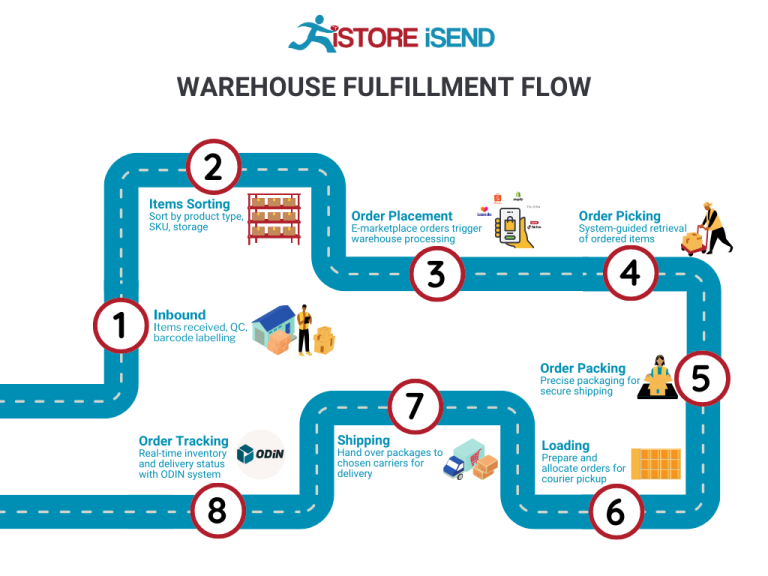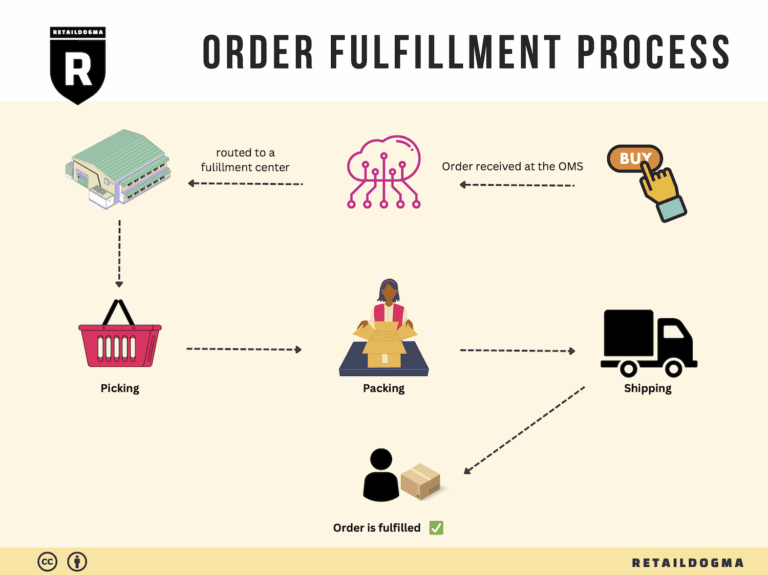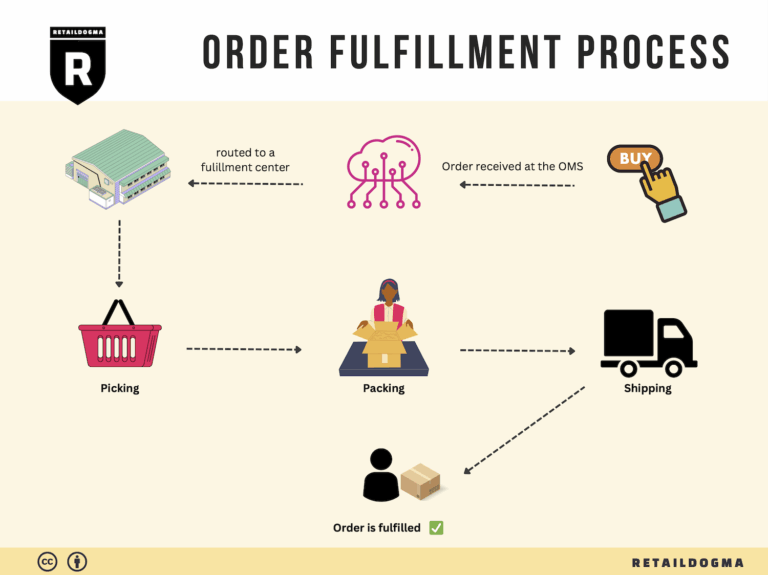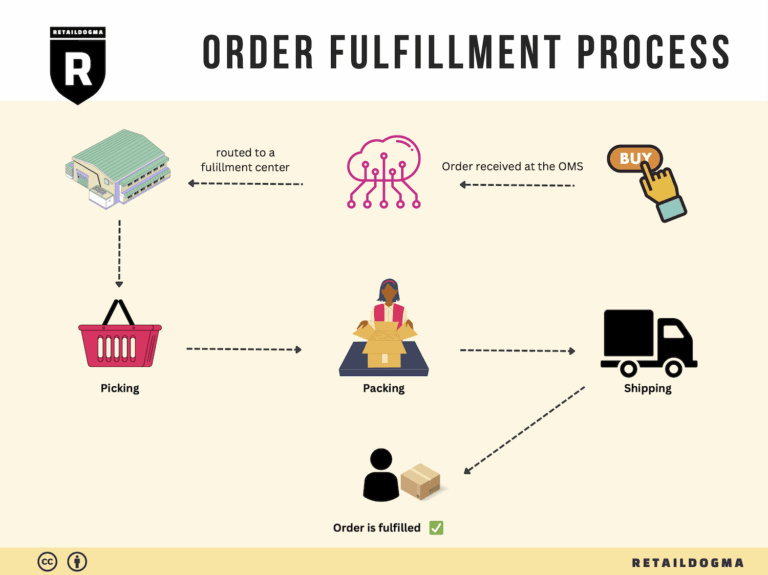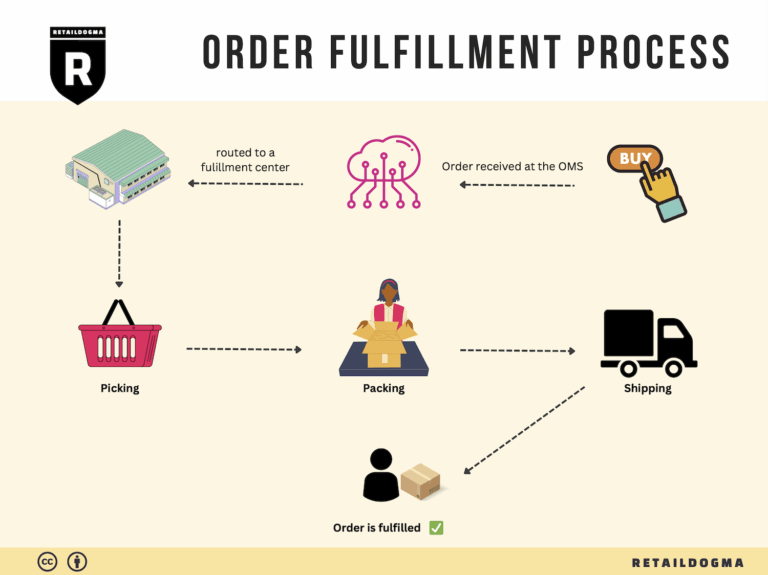What Is A Fulfillment Center? A Complete Guide (2025)
What is E-commerce Fulfillment? An Introduction for Growing Businesses
As a growing e-commerce business, you may find yourself overwhelmed with the intricacies of packing and shipping orders. The excitement of sales can quickly turn into stress when you realize that managing logistics is just as vital as marketing your products. For many entrepreneurs, the fulfillment process—the journey of getting a product from your inventory to the customer’s doorstep—can feel daunting. However, understanding and optimizing this process is essential for scaling your operations and maintaining customer satisfaction.
E-commerce fulfillment encompasses all the steps involved in delivering a product to a customer after an order is placed. This includes receiving the order, picking and packing the items, shipping them, and handling any returns. As your business grows, so too do the complexities of fulfillment. You might find yourself grappling with inventory management, order accuracy, and shipping timelines, all while trying to provide a seamless customer experience.
In this guide, we will explore various fulfillment models that can streamline your logistics. You’ll learn about third-party logistics (3PL) providers, which can handle storage, packing, and shipping on your behalf, as well as Fulfillment by Amazon (FBA), a popular option for many sellers looking to tap into Amazon’s vast distribution network. We will break down the core services offered by these models, including inventory management, order processing, and customer service support.
Choosing the right fulfillment partner is crucial for your business’s success. We’ll provide practical tips on what to consider when selecting a logistics partner, such as their technology capabilities, shipping options, and customer service. Understanding pricing structures will also be covered, ensuring you can make informed decisions that align with your budget and growth objectives.
Ultimately, this guide aims to empower you with the knowledge and tools necessary to make smart decisions about your logistics. By optimizing your fulfillment process, you can not only enhance operational efficiency but also boost customer satisfaction, leading to repeat business and sustainable growth. Let’s delve into the world of e-commerce fulfillment and set your business on the path to success.
What You’ll Learn In This Guide
- What is E-commerce Fulfillment? An Introduction for Growing Businesses
- The Order Fulfillment Process: From ‘Buy’ Button to Customer’s Door
- Comparing Fulfillment Models: In-House vs. 3PL vs. Dropshipping
- A Deep Dive into Amazon FBA: Pros, Cons, and Who It’s For
- Core Services Offered by Fulfillment Centers
- How to Choose a Fulfillment Partner: A 6-Point Checklist
- Understanding Fulfillment Pricing: A Breakdown of Common Fees
- Frequently Asked Questions (FAQs) about Fulfillment
- Conclusion: Is Outsourcing Fulfillment the Right Move for Your Business?
- Important Disclaimer
The Order Fulfillment Process: From ‘Buy’ Button to Customer’s Door
1. Receiving Inventory
The order fulfillment process begins with receiving inventory from suppliers or manufacturers. This step is crucial as it sets the foundation for your entire supply chain. During this phase, products are checked against purchase orders to ensure that the correct quantities and items have arrived.
It’s essential to maintain accurate records during this process, which is where SKU (Stock Keeping Unit) comes into play. Each product is assigned a unique SKU, allowing you to track inventory levels efficiently and manage stock accurately. This not only helps in maintaining a clear inventory count but also minimizes discrepancies that can lead to stockouts or overstock situations.
Moreover, a well-organized receiving process can significantly reduce the time it takes to move products into storage. By utilizing technology such as barcode scanners, businesses can automate the tracking process, ensuring that inventory data is updated in real-time. This step is vital because efficient inventory management directly impacts your fill rate, a key metric reflecting your ability to meet customer demand without delays.
2. Warehouse Storage
Once inventory is received, the next step is warehouse storage. Efficient storage solutions are essential to maximizing space and ensuring quick access to products when orders come in. During this phase, products are placed in designated locations within the warehouse, often organized by categories or SKUs for easy retrieval.
Proper warehouse storage techniques not only optimize the use of space but also play a critical role in maintaining inventory accuracy. Implementing a warehouse management system (WMS) can facilitate this process by providing real-time visibility into stock levels and locations. A WMS helps track where items are stored, making it easier to locate products when orders are received.
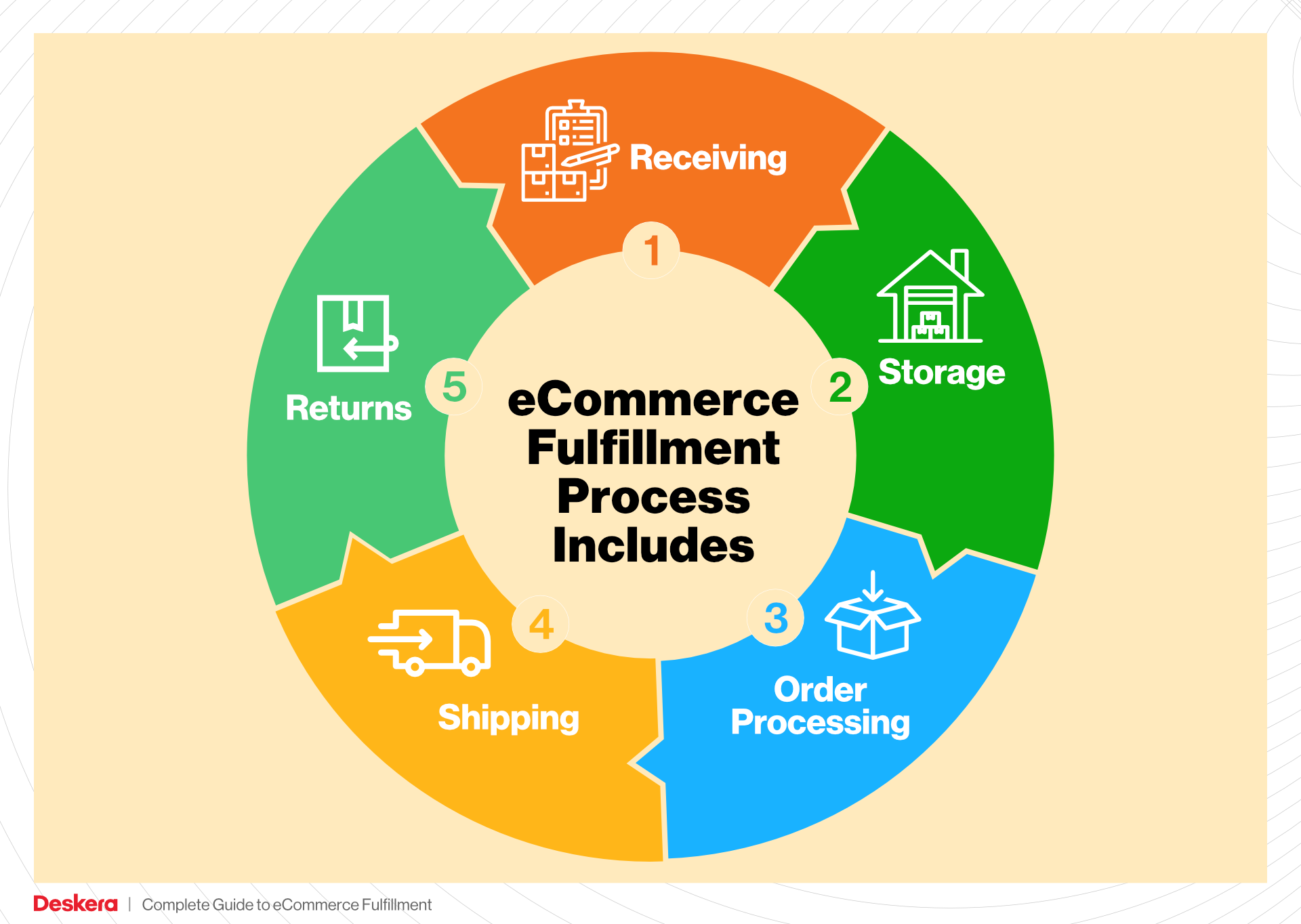
This step is significant because it directly affects the speed and accuracy of the subsequent order picking process. A well-structured warehouse can drastically reduce the time employees spend searching for items, leading to quicker order fulfillment and enhanced customer satisfaction.
3. Order Picking
With inventory stored efficiently, the next step is order picking. This is where the actual items are retrieved from the warehouse to fulfill customer orders. Order picking can be conducted using various methods, such as single order picking, batch picking, or wave picking, depending on the volume of orders and the layout of the warehouse.
A critical component of this step is the pick list, a document or digital tool that outlines which items need to be gathered for each order. Pick lists can be generated automatically through a WMS, reducing human error and streamlining the picking process.
The importance of this stage cannot be overstated; accurate and efficient order picking is vital for achieving a high fill rate. Any mistakes during this phase can lead to incorrect shipments, resulting in customer dissatisfaction and increased returns. Therefore, investing in training for warehouse staff and utilizing technology to enhance picking efficiency is essential for scaling your operations effectively.
4. Order Packing
After items have been picked, they move to the packing stage. During this step, products are carefully packaged to ensure they arrive at the customer’s door in perfect condition. This is where businesses can add value through branded packaging, custom inserts, and other personal touches that enhance the customer experience.

Key considerations during the packing process include using the right packaging materials and ensuring that items are secure to prevent damage during transit. The use of packing slips—documents that detail the contents of the package—can also help improve order accuracy and customer satisfaction.
The packing stage is crucial as it directly influences shipping costs and delivery times. Efficient packing processes can lead to reduced shipping expenses and improved fulfillment speed, both of which are essential for maintaining a competitive edge in the e-commerce market.
5. Shipping & Delivery
The final step in the order fulfillment process is shipping and delivery. Once orders are packed, they are labeled and handed over to shipping carriers for delivery to customers. This stage is critical for customer satisfaction, as timely delivery is one of the primary expectations of today’s consumers.
Utilizing a reliable shipping management system can streamline this process by automating label generation, tracking shipments, and providing customers with real-time updates on their order status. It’s important to choose the right shipping partners based on speed, reliability, and cost-effectiveness to ensure that orders reach customers promptly.
This step is vital not only for customer satisfaction but also for your overall fulfillment rate. Delays in shipping can lead to backorders and stockouts, negatively impacting your business reputation. Therefore, having a robust logistics strategy in place is essential for scaling your e-commerce operations effectively and maintaining a high level of service.
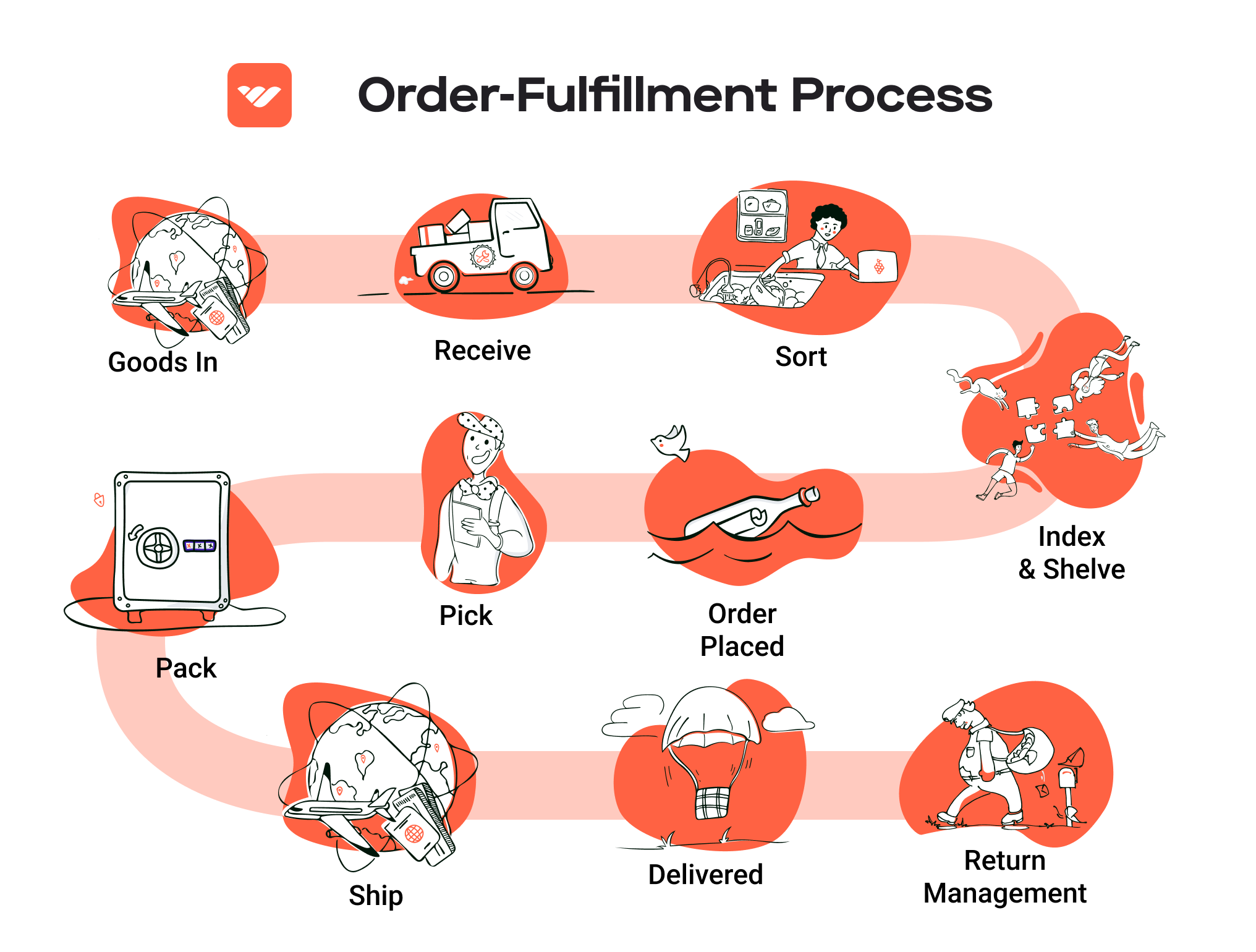
In conclusion, each of these five steps—receiving inventory, warehouse storage, order picking, order packing, and shipping & delivery—plays a vital role in the overall order fulfillment process. By optimizing each stage, businesses can enhance their efficiency, improve their fill rate, and ultimately drive customer satisfaction and loyalty.
Comparing Fulfillment Models: In-House vs. 3PL vs. Dropshipping
Fulfillment Models Overview
When scaling an e-commerce business, choosing the right fulfillment model is crucial. Each model comes with its own set of advantages and disadvantages, and understanding these can help you make informed decisions that align with your business goals and customer expectations. Below is a comparison of three primary fulfillment models: In-House Fulfillment, Third-Party Logistics (3PL), and Dropshipping.
| Model | Who Handles Inventory | Best For (Business Stage) | Key Advantage | Key Disadvantage |
|---|---|---|---|---|
| In-House Fulfillment | The business itself | Established businesses with stable sales | Complete control over inventory and fulfillment processes | High overhead costs and resource demands |
| Third-Party Logistics (3PL) | A third-party provider | Growing businesses seeking scalability | Access to expertise and technology without heavy investment | Less control over the fulfillment process |
| Dropshipping | Suppliers | Startups and businesses testing markets | Low upfront investment and reduced risk | Lower profit margins and dependency on suppliers |
In-House Fulfillment
In-House Fulfillment is the traditional method where a business manages its own inventory and order fulfillment processes. This model provides complete control over all aspects of logistics, including inventory management, order processing, and shipping. For established businesses with stable sales, in-house fulfillment can be beneficial as it allows for tailored processes that align with specific operational needs.
However, the key disadvantage is that it often comes with high overhead costs. Maintaining a warehouse, hiring staff, and investing in technology can require significant resources. Moreover, as demand fluctuates, businesses may face challenges in managing inventory levels effectively, which can lead to stockouts or overstock situations. Businesses must also be prepared to handle logistics complexities, which may divert focus from core operations such as marketing and product development.
Third-Party Logistics (3PL)
Third-Party Logistics (3PL) providers offer outsourced logistics services, allowing businesses to delegate inventory management and fulfillment tasks. This model is ideal for growing businesses that seek scalability without the burden of maintaining in-house operations. By leveraging a 3PL, businesses can access advanced technology, expertise, and a network of fulfillment centers that can significantly enhance shipping speed and efficiency.
The primary advantage of 3PL is that it allows businesses to focus on their core competencies while benefiting from the logistics provider’s infrastructure and experience. However, the downside is the reduced control over the fulfillment process. Companies must rely on the 3PL to handle inventory accurately, which can sometimes lead to discrepancies or delays in order processing. Choosing the right 3PL partner is crucial, as the effectiveness of this model largely depends on the provider’s reliability and responsiveness.
Dropshipping
Dropshipping is a fulfillment model where businesses sell products without holding inventory. Instead, when an order is placed, the business purchases the item from a third-party supplier, who then ships it directly to the customer. This model is particularly attractive to startups and businesses testing new markets, as it requires low upfront investment and minimizes financial risk.
The main advantage of dropshipping is the ability to offer a wide range of products without the need for inventory management or warehousing. However, the key disadvantage is that dropshipping typically results in lower profit margins. Businesses must also be mindful of their suppliers’ reliability, as delays or stockouts can directly impact customer satisfaction and the brand’s reputation. Additionally, quality control can be a challenge, as businesses have limited oversight over the products being shipped.
Conclusion
When deciding on a fulfillment model, e-commerce business owners must weigh the pros and cons of each option in relation to their specific business stage, operational capabilities, and customer expectations. In-house fulfillment provides control but at a higher cost, while 3PL offers scalability and expertise but less control. Dropshipping presents a low-risk entry point but can lead to lower margins and potential quality issues. Understanding these dynamics will empower business owners to choose a fulfillment strategy that aligns with their growth objectives and enhances overall customer satisfaction.
A Deep Dive into Amazon FBA: Pros, Cons, and Who It’s For
Understanding Fulfillment by Amazon (FBA)
Fulfillment by Amazon (FBA) is a service that allows e-commerce sellers to store their products in Amazon’s fulfillment centers. Amazon then takes care of storage, packaging, and shipping of products to customers on behalf of the sellers. This service leverages Amazon’s extensive logistics network, providing sellers with the ability to reach a broad customer base while focusing on their core business operations.
How FBA Works
-
Setting Up an FBA Account: To get started, sellers must create an Amazon seller account and sign up for the FBA service. This involves providing product information, setting pricing, and determining shipping options.
-
Shipping Inventory to Amazon: Sellers send their products to Amazon’s fulfillment centers. Amazon provides guidelines on how to prepare and package products, ensuring they meet their specific requirements.
-
Storage and Management: Once the products are received at the fulfillment centers, they are stored until an order is placed. Amazon manages inventory, including tracking stock levels and notifying sellers of low inventory.
-
Order Fulfillment: When a customer places an order, Amazon picks, packs, and ships the product directly to the customer. This process includes handling returns and customer service related to the order.
-
Sales and Reporting: Sellers can access sales data and inventory reports through their Amazon seller account, allowing them to analyze performance and make informed decisions about future inventory and marketing strategies.
Pros of Using FBA
1. Prime Eligibility
One of the most significant advantages of using FBA is that products become eligible for Amazon Prime. This means that Prime members can receive products with fast, free shipping, often within one or two days. Being part of the Prime program can significantly increase a seller’s visibility and sales, as Prime members are known to prefer products that offer this benefit.
2. Customer Trust and Credibility
Amazon is a trusted brand with a robust reputation for customer service. By using FBA, sellers can leverage Amazon’s credibility, which can enhance customer trust in their products. Customers are more likely to purchase from sellers who use FBA because they know Amazon handles the fulfillment and customer service, providing assurance regarding order handling and return policies.
3. Multi-Channel Fulfillment
FBA is not limited to sales on Amazon. Sellers can also use FBA for fulfilling orders from other sales channels, such as their own websites or other marketplaces. This flexibility allows businesses to streamline their operations and manage inventory more efficiently, using Amazon’s infrastructure to handle logistics across different platforms.
4. Scalable Operations
FBA allows businesses to scale quickly without the need for significant investments in warehousing and logistics. As sales increase, sellers can send more inventory to Amazon without worrying about storage space or fulfillment logistics, enabling rapid growth.
5. Comprehensive Customer Service
Amazon manages customer service for FBA orders, which includes handling inquiries, returns, and refunds. This frees sellers from the burden of managing customer interactions, allowing them to focus on other aspects of their business.
Cons of Using FBA
1. High Fees
While FBA offers numerous benefits, it also comes with several fees that can cut into profit margins. These fees include storage fees for inventory stored in Amazon’s warehouses, fulfillment fees for each unit sold, and additional charges for long-term storage. Sellers must carefully analyze these costs to ensure that FBA remains profitable for their business model.
2. Strict Inventory Rules
Amazon has strict policies regarding inventory management, including guidelines on how to prepare products and limits on certain types of products. Non-compliance can result in penalties, additional fees, or even suspension of seller accounts. Sellers must stay informed about these rules to avoid disruptions in their operations.
3. Commingling Risks
FBA products may be commingled with inventory from other sellers, which can lead to complications. If a customer receives a defective or damaged product, it can reflect poorly on the seller, even if they did not ship that specific item. This risk can impact seller ratings and customer satisfaction, making it essential for sellers to maintain high-quality inventory.
4. Limited Control Over Fulfillment
By outsourcing fulfillment to Amazon, sellers relinquish control over the packaging and shipping process. This means that sellers cannot customize packaging or include personalized messages, which can limit branding opportunities. For businesses that prioritize customer experience, this can be a significant drawback.
5. Inventory Management Challenges
Managing inventory levels can be more complex with FBA. Sellers must ensure they have enough stock to meet demand while avoiding excess inventory that could incur long-term storage fees. Additionally, forecasting demand accurately becomes crucial to maintaining optimal stock levels.
Who is FBA Best For?
Fulfillment by Amazon (FBA) is ideal for e-commerce businesses looking to scale quickly without the overhead of managing logistics and customer service. It is particularly beneficial for:
- Small to Medium-Sized Sellers: Businesses that may not have the resources to establish their own fulfillment centers can leverage Amazon’s extensive network.
- Sellers with High Sales Volumes: Those experiencing significant sales growth can benefit from the scalability and efficiency of FBA.
- New Entrepreneurs: Startups looking to enter the market quickly can utilize FBA to access Amazon’s customer base and fulfillment capabilities without heavy upfront investments.
- Multi-Channel Sellers: Businesses that sell across various platforms can streamline their operations by using FBA to fulfill orders from multiple sales channels.
In conclusion, FBA offers a powerful solution for e-commerce businesses aiming to enhance their fulfillment processes, but it’s crucial to weigh the benefits against the potential drawbacks. By understanding how FBA aligns with their business goals, sellers can make informed decisions that drive their growth and success in the competitive e-commerce landscape.
Core Services Offered by Fulfillment Centers
Inventory Management & Warehousing
Effective inventory management and warehousing are foundational services provided by fulfillment centers. This involves the systematic control of stock levels, locations, and movements within the warehouse. Fulfillment centers utilize advanced Warehouse Management Systems (WMS) to track inventory in real-time, ensuring that e-commerce businesses have accurate visibility of their stock.
The benefit of robust inventory management is twofold. Firstly, it minimizes the risk of stockouts, which can lead to lost sales and diminished customer satisfaction. By maintaining optimal stock levels and employing forecasting tools, fulfillment centers help businesses align their inventory with customer demand. Secondly, efficient warehousing processes reduce operational costs. By strategically organizing products within the warehouse, fulfillment centers can enhance picking efficiency, leading to quicker order fulfillment. This capability is especially crucial during peak seasons when demand can surge unexpectedly.
Pick and Pack Services
Pick and pack services are a critical component of the order fulfillment process. This service entails selecting the right items from the warehouse (picking) and preparing them for shipment (packing). Fulfillment centers employ various technologies and methodologies to streamline this process, including barcode scanning and automated picking systems.
The primary advantage of pick and pack services is the enhancement of order accuracy and speed. Automated systems reduce the likelihood of human error, ensuring that customers receive the correct items in a timely manner. Additionally, well-optimized packing processes can minimize shipping costs by reducing package size and weight, which is beneficial for both the business and the customer. Fast and accurate order fulfillment not only boosts customer satisfaction but also fosters repeat business and loyalty, which are essential for sustainable growth.
Kitting and Assembly
Kitting and assembly services involve combining multiple products into a single package or preparing products for sale in a way that enhances their appeal. This can include assembling items that need to be put together before shipping or bundling complementary products into one package. Fulfillment centers often offer custom kitting solutions tailored to the specific needs of e-commerce businesses.
The benefit of kitting and assembly services lies in their ability to create unique product offerings that can differentiate a brand in the marketplace. For example, a company selling a skincare line might offer a bundled package that includes several related products, enhancing the perceived value for customers. Additionally, these services can save time and labor for e-commerce businesses, allowing them to focus on marketing and sales rather than logistics. Kitting can also streamline inventory management by reducing the number of individual SKUs that need to be tracked, simplifying the overall fulfillment process.
Returns Management (Reverse Logistics)
Returns management, often referred to as reverse logistics, is an essential service provided by fulfillment centers to handle product returns efficiently. This process involves receiving returned items, inspecting them, restocking them, or managing their disposition (e.g., refurbishment or recycling).
The significance of returns management in e-commerce cannot be overstated. A well-structured returns process enhances customer trust and satisfaction, as shoppers are more likely to make a purchase if they know they can return items easily. Efficient returns management can also minimize losses associated with returned products. Fulfillment centers can quickly assess the condition of returned items and determine whether they can be restocked or if they need to be discounted or disposed of. This proactive approach not only helps maintain inventory accuracy but also contributes to improved cash flow by swiftly reintegrating products into the sales cycle.
In conclusion, fulfillment centers offer a suite of core services that are vital for the success of e-commerce businesses. By leveraging inventory management and warehousing, pick and pack services, kitting and assembly, and returns management, businesses can streamline their operations, enhance customer satisfaction, and ultimately drive growth. Investing in these fulfillment solutions allows e-commerce owners to focus on scaling their business while ensuring that their logistics processes are efficient and effective.
How to Choose a Fulfillment Partner: A 6-Point Checklist
Location & Warehouse Network
Importance:
The location of your fulfillment partner’s warehouses is crucial for optimizing shipping times and costs. A strategically placed warehouse network can significantly reduce transit times to customers, enhancing their experience and increasing the likelihood of repeat purchases.
Questions to Ask:
– How many fulfillment centers do you operate, and where are they located?
– How do you determine the best locations for your warehouses?
– Can you support shipping to my target markets efficiently?
– Do you have the ability to distribute inventory across multiple locations for faster delivery?
Technology & Integrations
Importance:
In today’s fast-paced e-commerce landscape, the technology your fulfillment partner uses can make or break your operational efficiency. An advanced technology stack can automate processes, provide real-time tracking, and integrate seamlessly with your existing systems.
Questions to Ask:
– What warehouse management systems (WMS) do you use?
– Can your technology integrate with my e-commerce platform (e.g., Shopify, WooCommerce)?
– Do you offer real-time tracking and reporting capabilities?
– How do you handle updates and maintenance of your systems?
Specializations (e.g., Cold Storage, Oversized Items)
Importance:
Not all fulfillment partners are equipped to handle specialized inventory needs. If your products require cold storage, special handling, or unique packaging, ensuring that your partner has the necessary capabilities is vital for maintaining product quality and compliance.
Questions to Ask:
– Do you have facilities for cold storage or other specialized needs?
– What types of items are you experienced in handling (e.g., fragile, oversized, hazardous)?
– How do you ensure compliance with regulations relevant to my products?
– Can you accommodate custom packaging or kitting requirements?
Scalability & Capacity
Importance:
As your business grows, your fulfillment partner must be able to scale alongside you. A partner with flexible capacity will help you meet increasing demand without sacrificing service quality or incurring unnecessary costs.
Questions to Ask:
– How do you manage seasonal spikes in order volume?
– What is your capacity for scaling operations quickly?
– Do you have a plan in place for unexpected growth?
– How do you handle inventory management during peak seasons?
Pricing and Contracts
Importance:
Understanding the pricing structure and contract terms is essential to avoid unexpected costs that can eat into your profit margins. A transparent and fair pricing model will help you budget accurately and maintain control over your operational expenses.
Questions to Ask:
– What is included in your pricing (e.g., storage, picking, packing, shipping)?
– Are there any additional fees I should be aware of (e.g., for returns, special handling)?
– What are the contract terms, and is there flexibility for renegotiation?
– Can you provide a detailed breakdown of costs for different order volumes?
Customer Support & Reviews
Importance:
Exceptional customer support can make a significant difference in your fulfillment experience. A partner who is responsive and proactive in addressing issues will help you navigate challenges more effectively, ensuring that your customers remain satisfied.
Questions to Ask:
– What type of customer support do you offer (e.g., phone, email, live chat)?
– What are your average response times for customer inquiries?
– Can you provide references or case studies from current clients?
– How do you handle issues that arise during the fulfillment process?
Conclusion
Choosing the right fulfillment partner is a critical decision that can impact your e-commerce business’s efficiency, customer satisfaction, and ultimately, your bottom line. By using this checklist to evaluate potential partners, you can ensure that you select a fulfillment solution that aligns with your operational needs and growth objectives. Remember, a strategic partnership in fulfillment can not only streamline your logistics but also enhance your overall customer experience, setting you up for long-term success in the competitive e-commerce landscape.
Understanding Fulfillment Pricing: A Breakdown of Common Fees
Initial Setup Fees
When partnering with a fulfillment service, businesses often encounter initial setup fees. These charges are typically one-time costs associated with establishing your account and integrating your systems with the fulfillment provider’s infrastructure. Initial setup fees can vary significantly depending on the complexity of your business requirements, the technology being integrated, and the fulfillment provider’s pricing structure.
Common components of initial setup fees may include:
- Account Creation: This involves creating your profile within the fulfillment provider’s system.
- System Integration: Costs may be incurred for integrating your e-commerce platform (such as Shopify, WooCommerce, etc.) with the fulfillment service.
- Onboarding Support: Some providers offer training sessions and technical support to help you navigate their systems, which can also contribute to initial costs.
To calculate your initial setup fees, request a detailed breakdown from your fulfillment partner, ensuring you understand all components that contribute to the total cost.
Receiving Fees
Receiving fees are charged when inventory arrives at the fulfillment center. This fee compensates the fulfillment provider for the labor and resources needed to unload, inspect, and store your products. The calculation of receiving fees is typically based on the volume or weight of the items being received.
Key factors that influence receiving fees include:
- Quantity of Items: More items may lead to higher fees due to increased labor required.
- Type of Products: Bulky or fragile items may incur additional handling fees.
- Inspection Requirements: If products need to be checked for quality or compliance, this may add to the receiving costs.
To get a clear picture of your receiving fees, inquire about the rate structure, as some providers may have tiered pricing based on the volume of inventory received.
Storage Fees (per pallet/bin)
Storage fees are recurring charges for the space your inventory occupies in the fulfillment center. These fees are typically calculated on a monthly basis and can be billed per pallet or per bin, depending on how your inventory is organized within the warehouse.
Factors that affect storage fees include:
- Size of Inventory: Larger products take up more space, resulting in higher storage fees.
- Duration of Storage: Longer storage periods can lead to increased costs, especially if your inventory turnover is slow.
- Seasonal Demand: Some fulfillment centers offer seasonal pricing, where fees may fluctuate based on peak seasons.
To manage storage costs effectively, analyze your inventory turnover rates and consider using a just-in-time (JIT) inventory strategy to minimize the amount of stock held in storage.
Pick & Pack Fees (per item/order)
Pick and pack fees are charged for the labor involved in selecting items from inventory and preparing them for shipment. This fee can be calculated per item picked or per order fulfilled, depending on the fulfillment service’s pricing model.
Considerations that influence pick and pack fees include:
- Number of Items per Order: Orders with more items may incur higher fees due to the increased labor involved.
- Complexity of Packing: Custom packaging or special handling may add to the base pick and pack fee.
- Volume of Orders: High-volume businesses may negotiate lower per-order fees due to economies of scale.
To optimize pick and pack costs, streamline your product offerings and consider consolidating orders where possible.
Shipping Fees
Shipping fees represent the cost of transporting your products from the fulfillment center to your customers. This cost can vary widely based on several factors, including:
- Shipping Method: Standard, expedited, and overnight shipping options will have different price points.
- Destination: Shipping costs can differ based on the distance from the fulfillment center to the customer.
- Weight and Dimensions: Heavier or larger packages typically incur higher shipping fees.
Many fulfillment centers have partnerships with carriers, which can provide discounted rates based on the volume of shipments. To get the most accurate shipping fees, request quotes based on your average shipment sizes and destinations.
Tips for Getting an Accurate Quote
-
Provide Detailed Information: When seeking quotes, share specifics about your product types, order volumes, and any special handling requirements. This helps fulfillment providers give you a precise estimate.
-
Ask for Breakdown of Fees: Request a detailed breakdown of all potential fees, including setup, receiving, storage, pick and pack, and shipping. Understanding each fee component will help you budget accurately.
-
Consider Long-Term Partnerships: If you anticipate growth, inquire about volume discounts or long-term partnership pricing that can lead to lower overall costs as your business scales.
-
Evaluate Multiple Providers: Don’t settle for the first quote you receive. Comparing multiple providers can help you identify the best balance between service quality and cost.
-
Review Terms and Conditions: Carefully read through the fulfillment provider’s terms and conditions to understand any hidden fees or contractual obligations that may affect your overall costs.
By carefully considering these common fulfillment pricing models and following these tips, e-commerce businesses can make informed decisions that align with their operational needs and growth objectives.
Frequently Asked Questions (FAQs) about Fulfillment
1. What is fulfillment rate?
Fulfillment rate, also known as order fulfillment rate, is the percentage of customer orders that are successfully shipped from available stock without encountering backorders or stockouts. It reflects a business’s ability to meet customer demand efficiently and is calculated using the formula:
Fulfillment Rate = (Total Orders Shipped / Total Orders Placed) x 100.
2. Why is fulfillment rate important for my business?
A high fulfillment rate is critical for maintaining customer satisfaction and loyalty. It indicates that your business can meet customer expectations for timely and complete deliveries. Monitoring this metric can help identify inefficiencies in your operations, inform inventory management decisions, and ultimately contribute to improved sales and profitability.
3. What is considered a good fulfillment rate?
While a perfect fulfillment rate of 100% is ideal, it is often unattainable due to various operational challenges. Most e-commerce businesses typically achieve a fulfillment rate between 85% and 95%. However, striving for a rate of 97% to 99% is advisable for optimal performance.
4. What factors can affect my fulfillment rate?
Several factors can impact your fulfillment rate, including inventory management practices, order accuracy, supply chain disruptions, and the efficiency of your fulfillment processes. For example, stockouts can lead to lower fulfillment rates, while streamlined operations can improve them.
5. How can I improve my fulfillment rate?
To enhance your fulfillment rate, consider implementing the following strategies:
– Optimize Inventory Management: Regularly review stock levels and reorder points to minimize stockouts.
– Automate Processes: Utilize technology to streamline order processing and inventory tracking, reducing human error.
– Analyze Performance Metrics: Regularly assess fulfillment metrics to identify areas for improvement and adjust your strategies accordingly.
6. What is the difference between a warehouse and a fulfillment center?
A warehouse primarily serves as a storage facility for goods, focusing on inventory management and storage. In contrast, a fulfillment center is designed specifically for order processing and shipping. Fulfillment centers typically have systems in place for picking, packing, and shipping orders efficiently, often utilizing technology to enhance speed and accuracy.
7. What is a 3PL (Third-Party Logistics)?
A 3PL is a service provider that manages logistics and fulfillment operations for businesses. This can include warehousing, inventory management, order processing, and shipping. Partnering with a 3PL allows businesses to leverage specialized expertise, technology, and resources, enabling them to scale operations without the overhead of maintaining their own logistics infrastructure.
8. How much do fulfillment services cost?
The cost of fulfillment services can vary widely based on several factors, including order volume, the complexity of the fulfillment process, and the specific services required (such as packaging and shipping). Generally, costs may include storage fees, picking and packing fees, shipping costs, and any additional services. It is advisable to request quotes from multiple providers to find a solution that fits your budget and needs.
9. How can I track my fulfillment rate?
To track your fulfillment rate, you can use order management software or fulfillment platforms that provide analytics and reporting features. These tools can automatically calculate your fulfillment rate by tracking the number of orders placed versus the number shipped, enabling you to gain insights into your operational performance in real-time.
10. What role does technology play in improving fulfillment rates?
Technology plays a crucial role in enhancing fulfillment rates by automating processes, improving inventory accuracy, and providing real-time data analytics. Tools such as warehouse management systems (WMS) can optimize picking and packing operations, while inventory management software can help maintain optimal stock levels, thus reducing the likelihood of stockouts and backorders. Leveraging these technologies can significantly streamline your fulfillment operations and improve overall efficiency.
Conclusion: Is Outsourcing Fulfillment the Right Move for Your Business?
Key Benefits of Outsourcing Fulfillment
Outsourcing your fulfillment can be a transformative decision for your e-commerce business. One of the most significant advantages is time savings. By partnering with a fulfillment service, you can redirect your focus from the complexities of logistics to core business functions such as marketing, product development, and customer engagement. This shift not only enhances your productivity but also allows you to respond more effectively to market demands.
Scalability is another critical benefit. As your business grows, so do the challenges associated with managing inventory and shipping. A capable fulfillment partner can seamlessly scale operations in line with your growth, whether that means accommodating seasonal spikes in orders or expanding your product range. This flexibility ensures that you can meet customer expectations without overextending your resources.
Moreover, leveraging the expertise of a fulfillment service can significantly enhance your operational efficiency. With specialized knowledge in inventory management, shipping logistics, and customer service, these partners are equipped to optimize your fulfillment process, improve your fill rates, and ultimately enhance customer satisfaction.
Choosing the Right Partner for Growth
However, it is crucial to choose the right fulfillment partner to unlock these benefits. Conduct thorough research and consider factors such as technology integration, customer service reputation, and their ability to align with your brand values. A good partner not only meets your logistical needs but also complements your vision for growth.
Call to Action
Now is the time to assess your current shipping processes. Take a step back and conduct an audit of your fulfillment operations. Are you facing challenges with inventory management or shipping delays? If so, it may be time to explore the potential advantages of a fulfillment partner. By making informed decisions today, you can position your business for sustainable growth and success in the competitive e-commerce landscape.
Important Disclaimer
⚠️ Important Disclaimer
The information in this guide is for educational purposes. Fulfillment services, pricing, and platform features change frequently. Always conduct your own due diligence and consult with providers directly before making business decisions.
